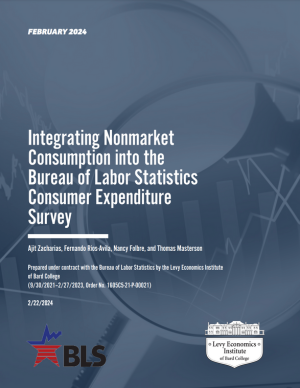
Publications
Dodd-Frank: Fossil of the Future?
By Dimitri B. Papadimitriou
Huffington Post Business, July 22, 2012. © 2012 TheHuffingtonPost.com, Inc. "The Huffington Post” is a registered trademark of TheHuffingtonPost.com, Inc. All rights reserved.
There's a sad truth about the fate of financial regulation: It's almost certain to be outmoded by the time it's introduced. This was as true of Glass-Steagall in 1933 as it is of Dodd-Frank today.
This month we begin the third year since the Dodd-Frank Wall Street reform act passed, with the struggle over its shape ongoing. It's a still-unmolded toddler, and already on the fast track to fossilization. Does the most ambitious finance legislation in decades carry the DNA to successfully cope with the next crisis? In a word, no.
The take-away from this challenge doesn't have to be cynicism, inaction, or laissez-faire tirades. To be ready for the next shock rather than the last one, though, we need to reset our thinking.
Dodd-Frank is based on the idea that financial markets are normally stable, with the exception of the occasional alarming "event." The New Deal's Glass-Steagall Act and the Clinton-era Gramm-Leach-Bliley "Modernization" shared those assumptions. All of these efforts were conceived as system-wide overhauls. In reality, though, they were designed only to remedy random, ad hoc crises; shocks like the 2008 meltdown, sometimes called "Minsky Moments."
Ironically, the late economist Hyman Minsky actually believed that these "moments" were anything but. At the Levy Institute, we share his view that instability is central to the genome of modern finance.
In other words, it's normal for the boat to keep rocking. The increasingly risky practices that fuel danger and instability are still being rewarded, and the absence of penalties for losses continues. The shocks will keep coming.
And each new threat to stability is destined to be different than the last. Dodd-Frank aims to identify the most vulnerable institutions and practices. That approach is too brittle to contain the disastrous effects of risks that are always morphing. Even constructive aspects of the Act could have perverse consequences, unless the rules are subject to sophisticated re-examination as the finance world develops.
Banks carry an urge -- maybe it's a genetic imperative? -- to evolve in a way that maximizes revenue. We're always witnessing how quickly markets create newer, riskier, and more profitable instruments. Credit default swaps aren't the only example, of course; look at the whole range of off-balance-sheet special purpose vehicles. It's the very nature of modern finance to transform its structure in response to the prevailing regulation, and to evade it successfully.
Under Dodd-Frank, banks will function more-or-less as they did in the past.
Their enormous size and multi-function operations -- the business model that underlies the latest crisis -- will be subject only to a series of cosmetic changes. The act's most significant measure, the Volcker Rule, continues to be diluted, and many of its other regulations are tied up in delays.
Instead of fundamental changes that would cushion our fragile system from shocks, Dodd-Frank's centerpiece is a limit on the use of public funds to rescue failing banks. By enabling rapid dissolutions, it aims to avoid a repeat of 2008, when the Lehman Brothers bankruptcy virtually froze capital markets. It's also an understandable response to TARP, which recapitalized insolvent financial institutions at a great cost, while allowing failing households to fall into foreclosure.
But limiting taxpayer exposure to the next bank breakdown is not the same as preventing a system-wide collapse. Tweaks to Dodd-Frank aren't a solution. Glass-Steagall contained features worth preserving, but reviving the law -- outdated then; infeasible now -- won't help. Neither will blaming Gramm-Leach-Bliley which, profound as it was, merely reflected the new status quo of its day. It institutionalized the changes that had already emerged in the markets.
We need banks that can earn competitive rates of return while they focus not on big risks, but on financing capital development. Reforms that promote enterprise and industry over speculation will have to be as innovative, flexible, opportunistic and plastic as the markets they aim to improve.
Regulators could begin by breaking banks down into smaller units. A bank holding company structure with numerous types of subsidiaries, each one subject to strict limitations on the type of permitted activities, would be a valuable deterrent to risky behavior. Restrictions on size and function would allow a reasonable shot at understanding esoteric subsidiaries, and a chance to react quickly to mutations.
As Dodd-Frank reaches its second anniversary, it faces both the limitations of its scope and the disheartening obstacles to its implementation. Will we really wait for the next, inevitable crisis before we start to develop adaptable reforms? In a word, probably.
